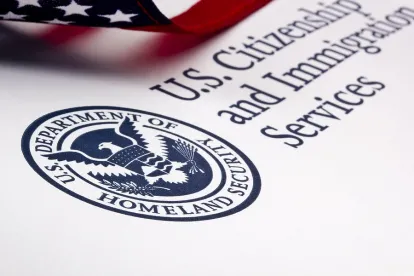Procedural History
In August 2016, the Department of Homeland Security proposed an “International Entrepreneur” parole rule that would allow qualifying foreign entrepreneurs to develop and grow their start-up companies in the United States. After public comment, the rule was finalized and released in the closing days of the previous Administration.
The rule was supposed to take effect in July 2017 but was recently put on hold and sent back to the Office of Management and Budget (OMB), and now will reportedly be scrapped altogether in the coming months. While no official reason has been given for this action, many members of the current Administration are on record as opposing expansive use of the government’s parole power, which authorizes limited executive action to permit the entry of certain foreign nationals without going through a visa process. Additionally, the President’s border security executive order of January 2017 orders the Secretary of Homeland Security “to ensure that parole authority … is exercised only on a case-by-case basis….” This power has usually been limited to isolated situations involving a compelling humanitarian need, and the current administration likely views the International Entrepreneur parole rule as unnecessarily bypassing the traditional route of applying for a visa at a U.S. Embassy or Consulate.
However, regardless of one’s view of the parole power, the current visa options in the U.S. Immigration and Nationality Act (INA) do not address this need. This rule would have filled an important hole in American immigration policy toward foreign investors and entrepreneurs – a hole that should still be filled.
The Current Visa Options in the INA Are Not Sufficient
E-2 Visas
The U.S. has a long-standing E-1/E-2 non-immigrant treaty regime, which allows foreign investors to use their investment in a U.S. company as a basis to live and work in the U.S. The United States currently has such treaties in place with over 80 countries. However, there are another 120 countries, including China and India, where we do not have an E-2 investment treaty. This means that the countries that form the sources of much of the innovation in today’s hottest fields cannot avail themselves of this avenue to enter the country.
Furthermore, the E-2 requires that the investor invest his or her personal funds in the U.S. enterprise. Young entrepreneurs with a great idea that could become the next Facebook, Google, or Microsoft generally do not have personal funds to finance the company. Instead they need a venture capital firm to help finance their growth, and that is often why they want to come to this country – to avail themselves of the U.S.’s vibrant technology and venture capital community.
In addition, the E-2 requires that the U.S. entity be at least 50% owned by nationals from the E-2 treaty country. However, while foreign entrepreneurs might start with 100% ownership, they typically lower it to below 50% in short order, as part of the process of obtaining venture capital financing. The entrepreneur is thereby quickly disqualified from an E-2 visa.
The L-1A Visa
Historically, for countries that did not have an E-1/E-2 treaty with the U.S., the L-1A visa has been the main option for company owners coming to the U.S. The L-1A visa is for intra-company transfers, and it is intended for senior management of large multinational companies who have worked for the foreign affiliate for at least a year. U.S. Citizenship & Immigration Services (USCIS) has frowned upon approving L-1 petitions for smaller companies. Therefore the L-1 visa could not bridge the gap for most young entrepreneurs seeking nonimmigrant visa status. In addition, America is best served by having the technology developed in the United States. With an L-1, the individual would have to form a foreign affiliate, work abroad for at least a year, and then fund the U.S. entity from the foreign affiliate.
H-1B Visa
The H-1B visa is problematic in two ways. First, it requires that the applicant have a four-year college degree, that the education be related to the job offer, and that the job offer involve highly specialized knowledge and the application of practical and theoretical knowledge.
The H-1B’s degree requirement alone means that an Indian Mark Zuckerberg or a Chinese Bill Gates would not qualify to enter the country and develop their companies here – a huge missed opportunity for our economy
Moreover, Congress set a strict quota limit on H-1B visas which makes it impossible to rely on for an entrepreneur. It is true that USCIS has tried over the last few years to accommodate H-1B petitions filed by companies on behalf of their business owner. However, that is only possible when the business manages to get a visa number from the H-1B lottery. In addition, some in Congress view this use of the H-1B as self-employment and outside the permissible boundaries of the intent of the H-1B visa program. And Congress has also begun to scrutinize recent efforts by some entrepreneurs to work part time for a cap-exempt university and then seek concurrent H-1B employment with their own company.
O-1 Visa
The O-1 visa was created to allow foreign nationals with an established record of extraordinary ability to come to the U.S. and work. While young entrepreneurs may demonstrate the potential to do something extraordinary, they have not yet achieved it and therefore do not qualify for an O-1 visa.
EB-5 Immigrant Investor
The E-B5 program requires that the entrepreneur personally invest his funds in the U.S. company. The qualifying investment at this time is $1 million for a metropolitan area. As discussed, most young entrepreneurs do not have that level of personal funds, certainly not before they have the opportunity to develop their idea. The E-B5 program is aimed at established industrialists, not young, hungry entrepreneurs. In addition, there are long processing times for this visa category and backlogs due to country quotas.
Conclusion
Existing visa options under the INA are not sufficient to accommodate the startup entrepreneurs intended to be covered by the International Entrepreneur parole rule. Legislative proposals to create entrepreneur visas of this type have kicked around Congress for years, but have not gained traction. If the Administration does not move forward with the rule, Congress could take the initiative and create a new “E-4” entrepreneur visa to fill this need. It would not only permit the “best and the brightest” to come to our shores and develop their ideas here; it would create what all Members of Congress want in their districts – new, high quality American jobs.




 />i
/>i

